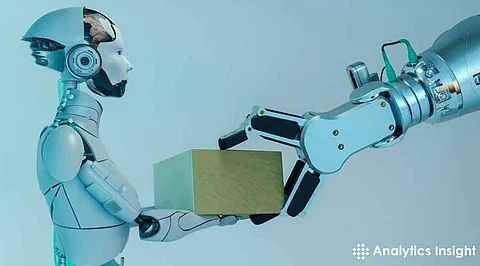

What makes robots capable of integrating with multiple hardware and software platforms seamlessly? The answer lies in a powerful framework known as the Robot Operating System, or ROS for short. However, it is important to note that ROS is not an operating system in the classical meaning of the term. It works on top of operating systems such as Linux and therefore acts as a middleware system.
ROS helps to keep the robot software simple by providing general tools, libraries, and methods of communication. Subsequently, it enhances the concept of modular development and distributed robotic applications, enabling developers to rapidly innovate in robotics.
ROS is a platform for developing robot software. It encompasses hardware abstraction, device drivers, process communication, and package management. The key components of ROS are:
Nodes: Software processes used in performing particular activities.
Topics and Services: Help in transmitting information between two or more nodes.
Libraries and Tools: Make developers concentrate mainly on their main clients without having to worry about lower-level issues.
Simulation and Visualization: In greater detail simulation software such as Gazebo which enables virtual testing of the robotic systems, or RViz which acts as a debugger for the robotic systems.
Since ROS can be easily used and adjusted, many robotics research and development use ROS as the main tool. It is open source. Thus, it has been developed through a collaboration of developers across the globe.
ROS operates through a few fundamental steps:
Node Creation: Nodes depict different software processes. These nodes are dedicated to certain tasks such as sensory data manipulation or motor function.
ROS Master: Serves as a directory to store information about nodes as well as facilitate an exchange of messages between the nodes.
Communication: ROS nodes act based on a publishing-subscription model. This enables them to positively exchange messages using topics. In terms of direct communications, services offer a request-response model of operation.
Parameter Server: Contains configuration data that are available for all nodes during the execution of the program.
ROS Packages: These packages consist of code, configurations, and other ancillary files. It is used in structuring and later reusing code in our programming activities known as packaging.
ROS is used in many industries. It has found its way into various robotic applications:
Autonomous Vehicles: ROS is crucial in self-driving cars. It is also instrumental in embedding the sensors and constructing the navigation algorithms.
Industrial Robotics: Employed for use in automated operations such as welding, assembly, and painting.
Medical Robotics: This is used in surgical robots because of the ability to offer a high level and elaborate control mechanisms.
Agricultural Robotics: Assist in planting, harvesting, and other activities practiced in farming such as tracking of crops.
Drones: They are critical and useful in aerial reconnaissance and keep an eye on situations in the environment.
ROS works with various sectors including healthcare, farming, manufacturing industries, and space industries. It contributes to nurturing modern robotic solutions to these fields.
ROS offers several advantages for developers:
Modularity and Reusability: Tasks such as navigation or, most notably, SLAM (Simultaneous Localization and Mapping) are available in pre-built packages that significantly reduce the amount of effort required.
Open-Source Nature: The libraries of ROS are open source and encourage people to share their ideas, and step up the pace of development. The works of members of the academia and developers can be added on to or can be developed from existing research work or information.
Distributed Architecture: ROS works for distributed systems. Two or more robots or devices in other locations can effectively communicate with one another.
Hardware Abstraction: Developers don't need to possess a high level of knowledge regarding the specifics of further equipment to be able to work with different sorts of sensors and actuators. As seen from the above concrete implementation, ROS provides client libraries and services, that is, standard interfaces.
Simulation Tools: To the same end, some tools provide simulation for testing such housings, including Gazebo. For example, developers can recreate the actual Martian landscape to analyze the movements of rovers.
Robot Operating system, or ROS, makes the software of robots easy to develop. Due to the mentioned characteristics, it allows constant novelty across different points of industries. Used in developing everything from autonomous cars to medical robots, ROS affords developers the tools to craft robust, easy-to-scale systems.
The outlined characteristics of openness also encourage collaboration, which makes ROS one of the indispensable tools for robotics today. Using ROS for implementing tools for simulation and continuous communication speeds up the advancement of future robotic applications
